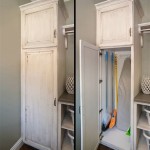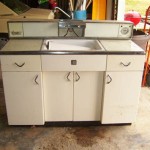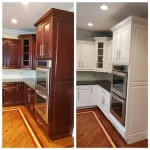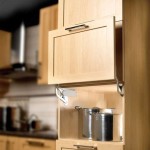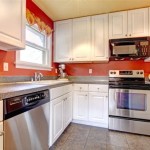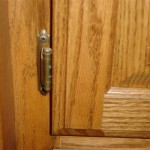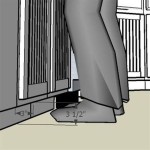Can I Paint My Kitchen Cabinet Doors? A Comprehensive Guide
The decision to paint kitchen cabinet doors is a significant one, impacting the aesthetic appeal and potentially the value of a home. This article provides a comprehensive exploration of the feasibility of painting kitchen cabinet doors, outlining the factors to consider, preparatory steps, the painting process itself, and potential pitfalls to avoid. The information presented aims to empower homeowners to make informed decisions and, if desired, execute a cabinet door painting project successfully.
Kitchen cabinets often constitute a substantial portion of a kitchen's overall appearance. Over time, cabinets can become dated, worn, or simply no longer align with evolving aesthetic preferences. Rather than undertaking a costly and disruptive full kitchen remodel, painting existing cabinet doors offers a more economical and less invasive alternative for revitalizing the space. However, the success of this endeavor hinges on careful planning and execution.
Assessing Cabinet Suitability for Painting
Not all cabinet doors are ideal candidates for painting. Evaluating the existing condition and material of the doors is a crucial first step. Cabinet doors constructed from solid wood, such as maple, oak, or cherry, are generally well-suited for painting, provided they are in reasonably good condition. Minor imperfections, such as small scratches or dents, can typically be addressed during the preparation phase.
However, cabinet doors made from laminate or melamine pose a greater challenge. These materials have a smooth, non-porous surface that paint struggles to adhere to. While it is possible to paint laminate or melamine, it requires meticulous surface preparation, including thorough cleaning, sanding, and the application of a specialized bonding primer. Even with careful preparation, the paint is more prone to chipping or peeling compared to wood surfaces.
Furthermore, severely damaged cabinet doors, such as those with significant water damage, warping, or delamination, may not be worth the effort and expense of painting. In such cases, replacement may be a more practical and cost-effective solution. A professional assessment can help determine the extent of the damage and advise on the most appropriate course of action.
Another important consideration is the style of the cabinet doors. Intricately detailed or ornate doors may be more difficult to paint effectively, as it can be challenging to achieve uniform coverage in all the nooks and crannies. Simpler, flat-panel doors are generally easier to paint and achieve a smooth, professional-looking finish.
Finally, the existing finish on the cabinet doors plays a role. If the doors have a high-gloss or polyurethane finish, thorough sanding will be necessary to create a surface that the new paint can adhere to. Alternatively, a de-glosser can be used to dull the existing finish, though sanding is generally considered more effective.
Preparation: The Key to a Professional Finish
Proper preparation is paramount to achieving a durable and aesthetically pleasing paint job on kitchen cabinet doors. Skimping on preparation will almost certainly result in a subpar finish that is prone to chipping, peeling, and other imperfections. The following steps outline the essential preparation process:
1. Removal and Labeling: Begin by carefully removing all cabinet doors from their hinges. Label each door and its corresponding cabinet frame with a numbering system. This is critical for ensuring that the doors are reinstalled in their original positions, as slight variations in size or alignment may exist.
2. Hardware Removal: Remove all knobs, pulls, hinges, and other hardware from the cabinet doors. Store these components in a safe place to prevent loss or damage. If desired, consider replacing the hardware with new pieces to further update the look of the kitchen.
3. Cleaning: Thoroughly clean the cabinet doors to remove all traces of grease, dirt, and grime. Use a degreasing cleaner specifically designed for kitchen surfaces. Rinse the doors with clean water and allow them to dry completely.
4. Sanding: Sand the surfaces of the cabinet doors to create a slightly rough texture that will promote paint adhesion. Use medium-grit sandpaper (around 120-grit) for the initial sanding, followed by fine-grit sandpaper (around 220-grit) for smoothing. Pay particular attention to edges and corners, as these areas are more prone to chipping.
5. Filling Imperfections: Use wood filler or putty to fill any dents, scratches, or imperfections in the cabinet doors. Allow the filler to dry completely, then sand it smooth and flush with the surrounding surface.
6. Priming: Apply a high-quality primer to the cabinet doors. Primer serves several important functions: it seals the surface, provides a uniform base for the paint, and enhances paint adhesion. Choose a primer that is specifically designed for the type of material the cabinet doors are made of (e.g., wood primer, laminate primer). Apply the primer in thin, even coats, allowing each coat to dry completely before applying the next.
7. Light Sanding (After Priming): After the primer has dried, lightly sand the surface with fine-grit sandpaper (around 320-grit) to remove any imperfections and create an even smoother surface for the paint. Wipe away any sanding dust with a tack cloth.
The Painting Process: Achieving a Flawless Finish
With the cabinet doors properly prepared, the next step is to apply the paint. The choice of paint and application method can significantly impact the final result. The following guidelines will help achieve a flawless finish:
1. Choosing the Right Paint: For kitchen cabinets, choose a high-quality paint that is durable, washable, and resistant to moisture and grease. Oil-based paints offer excellent durability but have a longer drying time and emit strong odors. Water-based acrylic or latex paints are easier to work with, dry faster, and have lower VOCs (volatile organic compounds). Consider using a paint specifically formulated for cabinets and trim for optimal results.
2. Application Method: There are several methods for applying paint to cabinet doors, each with its own advantages and disadvantages. Brushing is the most traditional method, but it can be challenging to achieve a smooth, uniform finish without brushstrokes. Rolling with a small foam roller can also produce good results, but it may require multiple coats to achieve adequate coverage. Spraying, using a paint sprayer, is generally considered the best method for achieving a professional-looking, factory-like finish. However, spraying requires more skill and specialized equipment.
3. Applying Multiple Coats: Regardless of the application method, it is essential to apply multiple thin coats of paint rather than one thick coat. Thin coats dry more evenly and are less prone to drips and runs. Allow each coat to dry completely before applying the next.
4. Sanding Between Coats: After each coat of paint has dried, lightly sand the surface with fine-grit sandpaper (around 320-grit) to remove any imperfections and create an even smoother surface for the next coat. Wipe away any sanding dust with a tack cloth.
5. Curing Time: Allow the painted cabinet doors to cure completely before reinstalling them. Curing time varies depending on the type of paint used, but it typically takes several days to a week. During this time, avoid touching or handling the doors excessively to prevent damage to the finish.
Finally, after the paint is fully cured carefully reinstall the hardware and reattach the correctly labelled doors to the corresponding frames.

The Best Way To Paint Kitchen Cabinets No Sanding Palette Muse

Diy Kitchen Cabinet Painting The Easy Way

How To Paint Cabinets Like A Pro Jenna Sue Design

A Step By Guide To Painting Kitchen Cabinets With Kilz Primer Blog

Paint Your Kitchen To Update It My 80 S Refreshed Kay Place

How To Paint Your Cabinets In A Weekend Without Sanding Them Chris Loves Julia

How To Paint Old Kitchen Cabinets Save Yourself 1 000s Builds By Maz

What You Need To Know Before Painting Cabinets The Palette Muse

How To Paint Kitchen Cabinets Best Color Ideas Cost

How To Paint Veneer Cabinets For A Long Lasting Finish Anika S Diy Life
Related Posts

